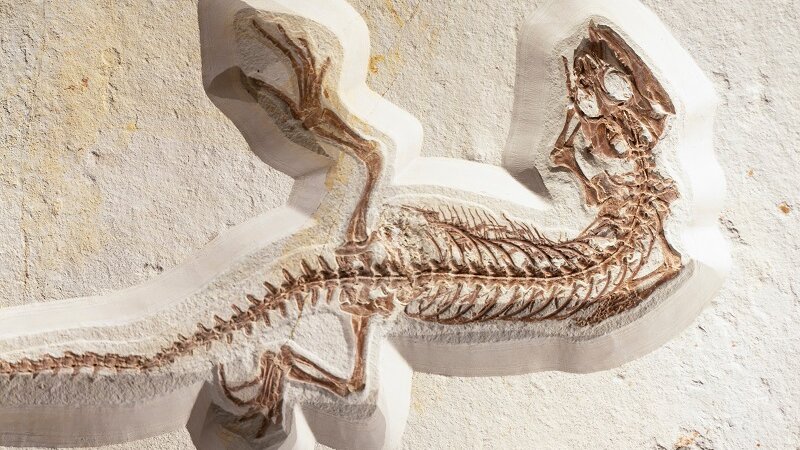Mary Anning
Episode #1 of the course Ten significant women in science by James Wareing
In our first lesson, we shall learn about a woman who, before she was even a teenager, had produced a world-first in science. This is despite having left school and being largely self-taught. Despite this, very little is known of Mary Anning, a paleontologist born on the south coast of Britain in Dorset in 1799. We will, therefore, learn both why she is so significant and why history has largely obscured her memory from contemporary knowledge.
What Did She Do?
Mary Anning was born into a poor family, who had ten children of which only two made it to adulthood. Her father died when she was 11 which left the family with very little money. This left her far from the typical realm of scientists, who were mainly rich men. However, this did not stop Anning, at the age of just 12 making a stunning discovery alongside her mother and brother. They lived in Lyme Regis, where the coastal cliffs are made up of limestone and shale dating back 200 million years. They discovered the first full-skeleton of an Ichthyosaurus (translated as a fish lizard), which lived in the Jurassic period.
In 1823 Anning made another groundbreaking discovery, uncovering the first full skeleton of a Plesiosaurus. Following that, she found the first pterosaur outside of Germany as well as playing a key role in the identification of coprolites, which were fossilized feces. She gained her knowledge through her observations and meticulous drawings she made alongside her work. Furthermore, despite not having been to university and even having taught herself to read, she read many scientific papers to complement her knowledge.
Without her father to bring in money for the family, Mary’s work played an important role in sustaining them. Paleontologists and collectors from across Europe would buy her fossils at auction. However, this often led to the collectors being given the credit for the finds whenever they were later donated to museums or researchers. Cruelly, for this reason, Anning was rarely given the full credit that she deserved.
Legacy and Challenges Faced as a Woman
The scientific community in Britain at the time was mainly made up of rich gentlemen. The Geological Society of London refused to allow her entry and indeed did not do so for women until 1904. The attitude, therefore, to a poor woman, who had not even been educated, producing new findings was antipathetic. Her discoveries were well-known by those within archaeology but recognition of her work was scant. Her findings were often not referenced in a scientific paper and she was not invited to meetings to discuss what she had found. Despite showing great expertise in being able to identify and categorize what she found it is clear that, due to her social status and gender this knowledge was largely neglected.
Towards the end of her career, she did begin to gain more recognition and appreciation among the scientific community. She developed a friendship with one of the most prominent British geologists, Henry De la Beche, who also helped to support her and her family financially. Upon her death, the Geological Society of London, which had refused her entry throughout her life nevertheless raised money to contribute towards her expenses and was given a eulogy at one of their annual meetings.
Today, recognition of Anning’s work has grown. Tourists visit Lyme Regis and the Jurassic Coast, a UNESCO World Heritage Site, where she was born and worked. Anyone from scientists to amateurs visit to hunt for fossils and driven by the allure of being the next Anning. The Natural History Museum in London now displays some of her discoveries (attributing them, of course, to her and not those who donated them to the museum!)
Tomorrow we shall learn about Hertha Ayrton and how her scientific abilities and determination led her to be nicknamed after a fictional heroine.
Recommended book
Remarkable Creatures: A Novel by Tracy Chevalier
Share with friends


